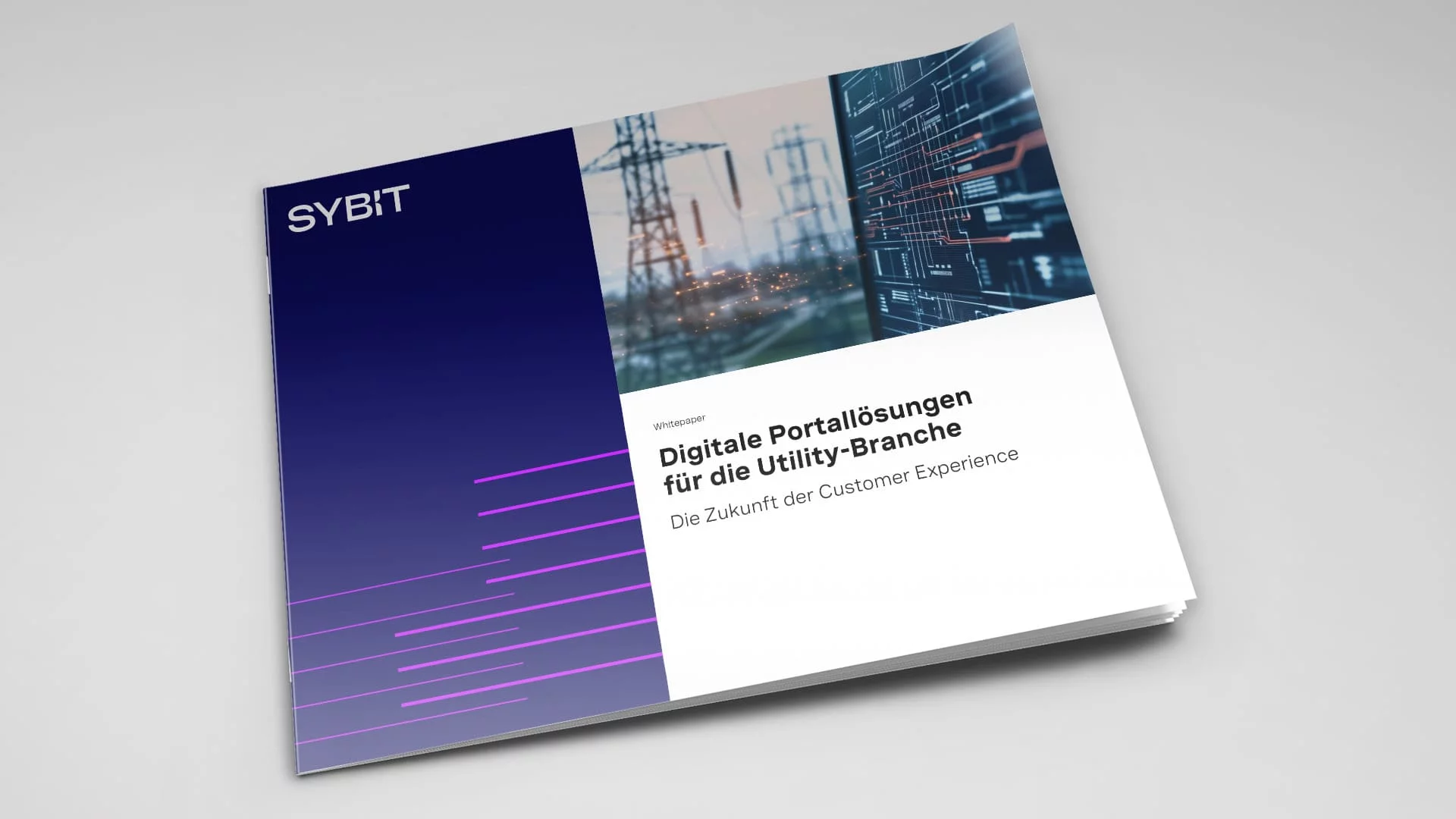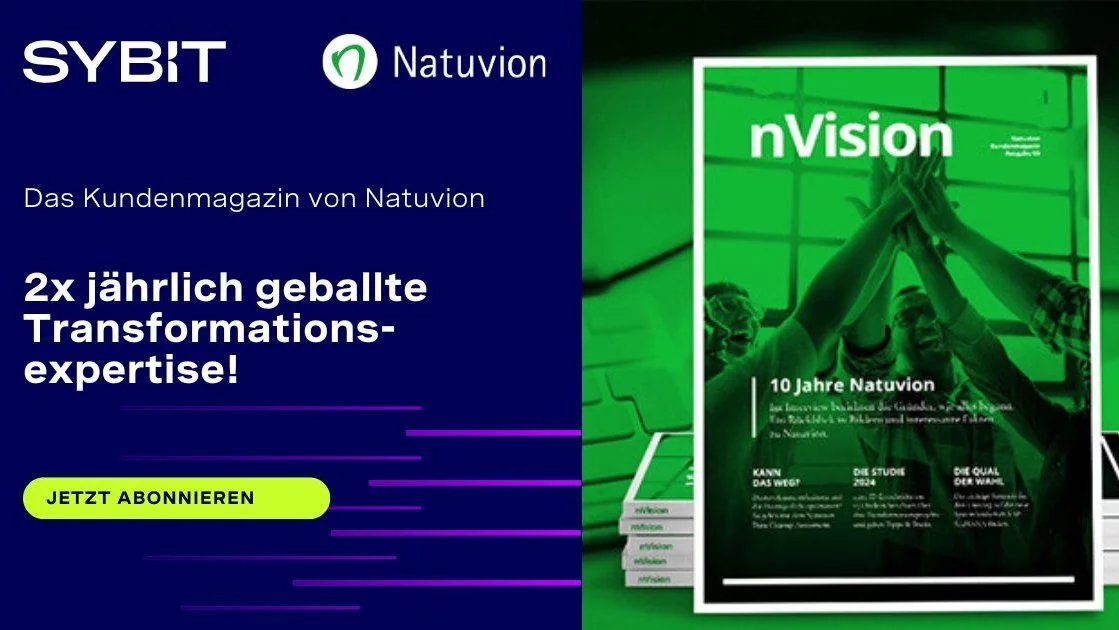An interview with Philipp von der Brüggen, CMO, Natuvion GmbH
SYBIT, a sister company of Natuvion, specializes in optimizing customer relationships on digital channels. The CX consulting firm has been successful in many different industries for many years. With the SYBIT Utility Approach there is now also an interesting offering for energy suppliers. This prompted Natuvion to talk about CX in general and the new approach. Philipp von der Brüggen asked him about it.
SYBIT is an expert in the field of customer experience (CX). Which industries do you work with?
Historically, SYBIT has its roots in manufacturing, mechanical engineering and the automotive sector.. Over the years, the portfolio has steadily expanded and evolved. We have also built up expertise in the chemicals, medtech, consumer goods, professional services, and construction industries . Today, we can say that we do everything except banking, insurance, and retail.
I assume that everyone has a different idea of what CX means. What exactly do you do?
We deal with all customer-centric processes, i.e., processes that involve the end customer. In sales and marketing, this includes managing all sales activities, such as lead management, pipeline management, and conversion rate optimization. In service, CX often starts with simple ticketing and extends to technician deployment, whether B2C or B2B. In the e-commerce sector, we are active in everything from classic shop applications to technical portals, where aftermarket processes are also mapped.
You talk about holistic customer service. What does that mean?
Our offering consists of a comprehensive consulting and solution portfolio. We have a long history of implementing various solutions that map and optimize end-to-end CX processes. Over the years, we have gained so much experience that we have been able to advise customers on the development of specific business processes. We have now gone one step further and offer business consulting. We provide answers to questions such as: Which business strategies are relevant for customers? How do I implement them? How do I map them in a process and then in applications? And finally: How do I manage and optimize these processes? This completes our offering.
Why do you focus on only a few industries?
Within individual industries, requirements, legal frameworks, and processes vary so greatly that you can only help customers if you know the market and its specifics. And to be taken seriously, you also need to speak the respective “language” and be familiar with market developments.
How big are your customers?
SYBIT comes from the upper mid-market. However, we now also often work with large enterprise customers. Our 25 years of experience help us in this regard. We are really proud to support many “hidden champions” in the manufacturing sector.
We talked about processes. How far does that go? Who defines, for example, what user interfaces should look like in order for the process to work?
Our teams do the same. To develop a customer journey, it is not enough to simply implement the front end and the interface. The application must be intuitive and easy to use, and ideally even fun to use. We added these agency services to our portfolio years ago in order to offer everything from a single source. This also describes our path quite well. Over the years, we have evolved from an implementation service provider to a full-service CX partner.
Now you have a dedicated offering for energy suppliers. Why?
Yes, we have been offering a specific industry solution since last year. We have been implementing projects in the utilities sector for a long time. We just never developed a concrete market approach from it. However, we can see that the segment is undergoing major changes. Deregulation, decentralization, decarbonization, and digitalization. All of these points are directly related to customer relationships. We want to contribute our experience here. SAP has also recognized this potential. They have invested heavily in the CX portfolio and created significant added value in their applications for utility companies over the last few years. It is also a logical step for us to now focus more on this area. Natuvion, which has been our sister company for two years through NTT DATA Business Solutions, has a very strong historical presence in this market. We can help each other a lot here. Together, we have a really exciting utilities portfolio.
What is the basic idea behind your utility approach?
The basic idea behind this approach is to integrate customer interactions and internal company processes. From meter replacement to technician scheduling, all processes must run efficiently. This is where the SYBIT Utility Approach comes in, integrating front-end solutions such as portals with processes in sales, service, and field service management and with SAP ERP or SAP S/4 HANA. An example: A utility company receives a wide variety of service requests every day. These range from requests to view an invoice again to reports of faulty lines. The goal is to offer end customers a single, simple, understandable touchpoint through which they can take care of everything. Our task is to link all processes intelligently so that customers can easily, efficiently, and transparently monitor what happens to their requests. And, of course, everything is fully integrated into the backend.
Where do your strengths lie?
We are simply particularly strong when it comes to end customer business. We have the answer to the question: How should services look and function so that customers come to me and stay with me on the one hand, and on the other hand, internal processes are optimized so that my teams can work much more efficiently.
How important is creativity in your daily business?
Creativity cannot be underestimated. Business consulting, process consulting and UX design require the constant development of new approaches and business models. Ideas that make a difference! And solutions for implementing and integrating these ideas into portals and applications. And, of course, everything should be designed to provide the customer with an optimal customer experience. To do this really well, you need expertise in all disciplines. There are not many providers left who take this holistic approach and can implement it technically. But that's the only way it works.
How does it start when a customer approaches you? What are the typical challenges?
First, we sort out the customer's requirements and try to understand the business problem. What is the goal? What added value should be generated? Once we have worked that out, we move on to the next step. We call this phase 0: recording requirements, structuring them, and developing a solution approach. Of course, we develop this in detail and together with the customer. Only then does the technology come into play. So, the first step is not very technical.
Can you give us an example of a typical customer request?
A typical requirement is the development of a portal solution. How can I achieve personalization in the front end for the customer? How can I create a seamless omnichannel experience? How can I ensure that users have all their information, whether it be messages, emails, phone calls, service requests, or invoices, in one portal? If you can solve that, you've already taken a big step forward.
An example: A customer calls, and you want to immediately see who is on the phone and have all their details, such as address, electricity rates, communication, and customer history, displayed instantly. Sounds trivial, but it's actually really complex.
What are the future trends? Where is the journey headed?
Personalization through AI is going to be huge. Just think about proactive customer service. Intelligent analytics already enable proactive solutions to be offered before a problem even arises! These are additional services that offer significant added value for customers: a failure, disadvantage, or delay doesn't even occur because I was informed in advance. This opens up many new possibilities!
In addition, processes must become increasingly flexible. Just think of photovoltaic users, who suddenly become not only customers but also producers for electricity suppliers. So-called prosumers. How are providers responding to this? What services can we expect in the future? The decentralization of the electricity supply will certainly change a lot.


